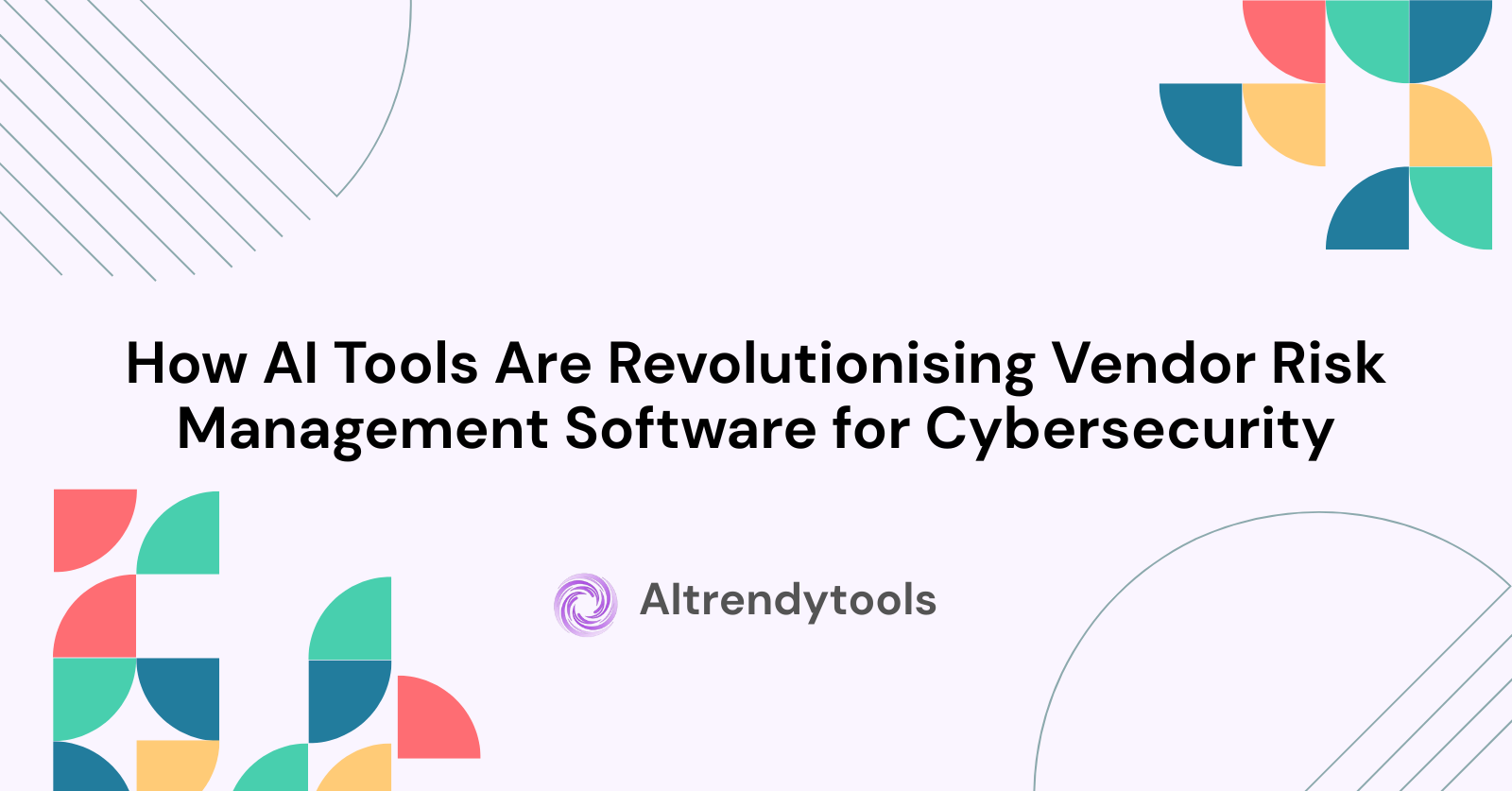🔥 AITrendytools: The Fastest-Growing AI Platform |
Write for usA Guide to AI Tools Working with Vendor Risk Management Software for Cybersecurity in 2025.
Discover how AI tools are supporting vendor risk Management software for cybersecurity to protect businesses from potential cyber threats in 2025.
Sep 15, 2025
Data supply chains are growing, and cyber threats are evolving in the process. Businesses need more than manual oversight to protect themselves, especially when vendor risks are involved. This is where AI tools in vendor risk management come into play, providing support for insights, automation, and motivation in ways to keep businesses protected.
The role of AI in vendor risk & cyber supply chain security
Vendor risk is not only about contract clauses or audits. The focus is on third-party vendor infrastructure, such as poor patching, weak access control and misconfigured systems that can provide attackers with a door to the business. AI tools can support cybersecurity strategies by:
- Analyzing large volumes of vendor questionnaire responses and looking at how good their cybersecurity practices are
- Identifying any anomalies such as responses, suppliers or new vulnerabilities using threat intelligence feeds
- Predicting any risk trends over time, which vendors require remediation first
- Automating tasks such as reminders, scoring, compliance and flagging any security issues
When done correctly, combining AI with real-time data, businesses can react quickly, reduce any human errors and raise the bar for vendor security postures.
What to look for in great vendor risk management software
When considering software to help manage vendor risks, here are some key features that support AI and cybersecurity resilience:
- Continuous monitoring: This isn’t only check-ups but ongoing surveillance, including looking into vulnerabilities, certificate statuses, leaked credentials and security incidents
- Automated risk scoring: Systems should weight factors such as data sensitivity, access levels, incident history and compliance to help you focus on high-risk vendors first
- Workflow Automation: This is done by collecting evidence to track the status of reports and actions
- Integration: Ability to ensure vendors follow specific compliance frameworks such as NIST, ISO 27001, DORA or NIS2 to ensure compliance is met.
- Threat intelligence: Utilising external feeds, such as vulnerability databases and monitoring, to detect potential issues before security risks can occur.
Best practices: Combining AI tools with governance
AI tools are robust systems, and businesses still need effective governance to define processes and clarify accountability. Some best practices are:
- Ensuring vendor risk management is part of your third-party risk management (TPRM) programme, from onboarding to offboarding. Treat vendors as part of your cybersecurity strategies.
- Regularly review and validate AI tools to ensure they’re activated, and human insights are essential for this.
- Ensure transparency with vendors, such as looking into metrics, responses and what security standards to follow.
- Using standards and frameworks to enhance your compliance. For example, the UK National Cyber Security Centre (NCSC) provides information on chain security and vendor risks.
- Embedding contractual obligations such as reporting, cybersecurity audits and access controls to enforce expectations when risks emerge
Following these best practices and understanding them can ensure that when businesses work with external vendors, their operations, systems and infrastructure are protected against any potential cyberattacks which can occur.
Why vendor risk management software (with AI) matters now
As regulations are growing, such as the EU’s NIS2 directive, or sectoral controls around data privacy and financial rules, businesses will be held responsible for their open cybersecurity and for their vendors too. Many tools can help flag any non-compliance, show evidence and supply audits,
In addition, global supply chains mean vendors might be in many jurisdictions, using subcontractors (4th or 5th parties) that you may not see. Vendor risk management extends deeper into the chain, helping businesses to identify any risks and detect any threats early enough.
Introducing robust vendor risk management software
To master this, businesses must adopt advanced solutions such as vendor risk management software (VRMS) that integrates all features. These platforms combine AI, content monitoring, risk scoring and compliance in real time. For instance, a well-designed VRMS can:
- Automatically generate vendor risk scores based on questionnaires
- Detect any anomalies and threats within vendor environments
- Issue alerts when regularly compiled documents are out of date or missing
- Visualize your vendor ecosystem so you can see where the risks are involved
Together, these capabilities can help to transform risk management into a proactive, intelligent lead process. By using the right platform, businesses can streamline their compliance, strengthen their security and gain confidence when working with vendor ecosystems.
Conclusion
As cyber threats continue to grow and supply chains become increasingly interconnected, manual vendor risk assessments may no longer be sufficient. AI-powered vendor risk management software supports security teams in detecting vulnerabilities, investigating remediation, and ensuring compliance.
Combining these tools with strong governance and clear vendor expectations can help reduce any third-party risks and secure ecosystems that protect sensitive data.
🚀 Submit Your Tool to Our Comprehensive AI Tools Directory
Get your AI tool featured on our complete directory at AITrendytools and reach thousands of potential users. Select the plan that best fits your needs.





Join 30,000+ Co-Founders
Related Blogs
Dext Review 2025: Guide to Automate Your Bookkeeping
Discover how Dext software transforms expense management with 99.9% accuracy. Complete guide to features, pricing, integrations & alternatives for 2025.
Texto Invisible: 10 Ways to Copy Hidden Text & Blank Space
Master texto invisible for WhatsApp, Instagram & gaming. Learn how to create hidden text, blank characters & empty spaces. Free generator + step by step guide
WriteHuman AI Review: Does It Really Bypass AI Detectors?
Honest WriteHuman AI review with real testing results. Learn if this AI humanizer actually works, pricing details, and better alternatives for 2025.
Submit Your Tool to Our Comprehensive AI Tools Directory
List your AI tool on AItrendytools and reach a growing audience of AI users and founders. Boost visibility and showcase your innovation in a curated directory of 30,000+ AI apps.





Join 30,000+ Co-Founders

